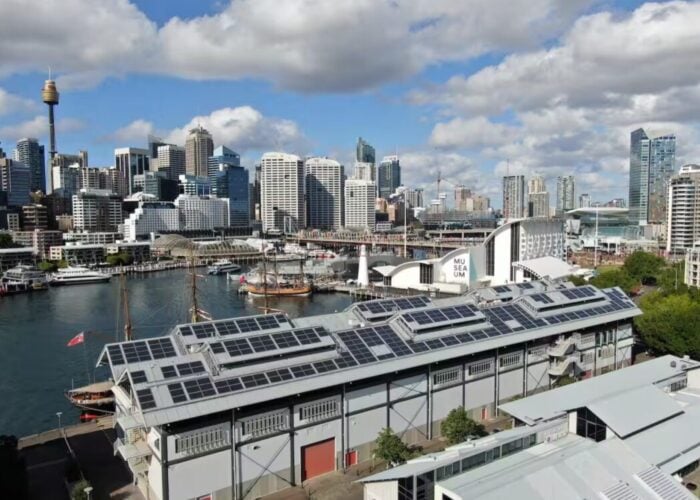Environmentalists clamoured to celebrate the election of Joe Biden after a tense and extended wait to find out who would become the next president of the United States in early November. Throughout his and his running mate Kamala Harris’ campaigns, the need for action on climate change, including support for renewables, had been front and centre, giving hope to the solar sector of further support.
“President-Elect Biden’s plan to combat climate change enables our industry to create hundreds of thousands of well-paying jobs across the country,” says Abigail Ross Hopper, president and CEO of the Solar Energy Industries Association (SEIA). “We look forward to working with his administration and Congress on policies that reduce carbon emissions including tax policies that pave the way for greater adoption of solar energy and energy storage.”
Try Premium for just $1
- Full premium access for the first month at only $1
- Converts to an annual rate after 30 days unless cancelled
- Cancel anytime during the trial period
Premium Benefits
- Expert industry analysis and interviews
- Digital access to PV Tech Power journal
- Exclusive event discounts
Or get the full Premium subscription right away
Or continue reading this article for free
But while optimism pervades the sector – with multiple solar manufacturers seeing their stock prices rise in response to the win – much remains to be seen about Biden’s clean energy policies and their prospective impact on the sector.
Industry bodies have begun to voice their hopes that some of the headwinds created during outgoing President Donald Trump’s term, such as increased tariffs and reduced support, will now be reversed. But many remain cautious, highlighting the need for bipartisan support, and cautiously awaiting the results of the senate race, with a run-off election in Georgia set for early January 2021.
For example, in a statement congratulating Biden on his electoral victory, US solar manufacture First Solar said it was “hopeful that policymakers on both sides of the aisle will be able to embrace the need for a long-term renewable energy policy that will deliver the certainty required to attract investment, drive R&D, and create stable solar jobs.”
The significance of re-joining the Paris Accords
Throughout his campaign, Biden repeatedly stated that one of his first moves when he takes office on 20 January 2021 will be to re-join the Paris Agreement by executive order.
When the US formally withdrew from the historic agreement on 4 November 2020 – just a day after the election itself – the then presidential nominee took to twitter to declare: “Today, the Trump administration officially left the Paris Climate Agreement. And in exactly 77 days, a Biden administration will rejoin it.”
This will send a strong signal to the US solar sector about Biden’s priorities during his four-year term. Bill Parsons, COO of the American Council on Renewable Energy (ACORE), explains that it was both significant in terms of the symbolism of the action as well as making “tangible progress towards climate targets, and the critical role that solar and other forms of renewable power are going to play in achieving those objectives.”
Beyond the commitment to re-join the Paris Agreement, there are not many details known about the incoming President’s support for clean technologies. Speaking on a press call recently, SEIA CEO Abigail Ross Hopper confirmed that in her discussions with the incoming team, they had not yet indicated which direction they would take with regards the Investment Tax Credit (ITC), for example.
But Biden has announced one significant energy policy, committing to invest $2 trillion over his first term to accelerate America’s transition to a carbon pollution-free power sector by 2035. While this may seem ambitious for a nation that still relies on fossil fuels for 63% of its electricity according to the US Energy Information Administration, it is within reach according to solar manufacturer Nextracker’s CEO Dan Shugar.
Shugar says that in order to understand the trajectory for US solar, it’s important to reflect on the journey the sector has undergone so far, and in particular over the last 15 years. In 2005, solar cost “over an order of magnitude more than it does now”, Shugar says, and played a very small role in the US power sector.
“15 years ago we built the largest solar plant in the world, which was 10MW, and took us a year. We're doing 10MW now every day before breakfast, we do another 10MW by lunch, another by dinner, then we do another one overnight. So that's the clip we're moving at, how fast and how much things have happened in the last 15 years,” he says
The SEIA has set an ambitious goal of solar generating 20% of all US electricity by 2030, a significant jump from today’s roughly 3%. That would require growing at an average rate of 18% annually, and installing more than 500GW of solar in less than a decade. Doing so would help hugely with reaching a net zero grid by 2035, but would require strong political support.
“I’m very optimistic we can land a zero or near zero grid, but in terms of how that plays out pragmatically, we need some cooperation with a broader constituency of our political leaders. Hopefully, we can get to more cooperation between our two respective parties to implement that soon,” Shugar says
This is an extract of an article first published in Volume 25 of PV Tech Power. The full article can be read in the full digital copy of PV Tech Power 24, which can be downloaded via the PV Tech Store here





